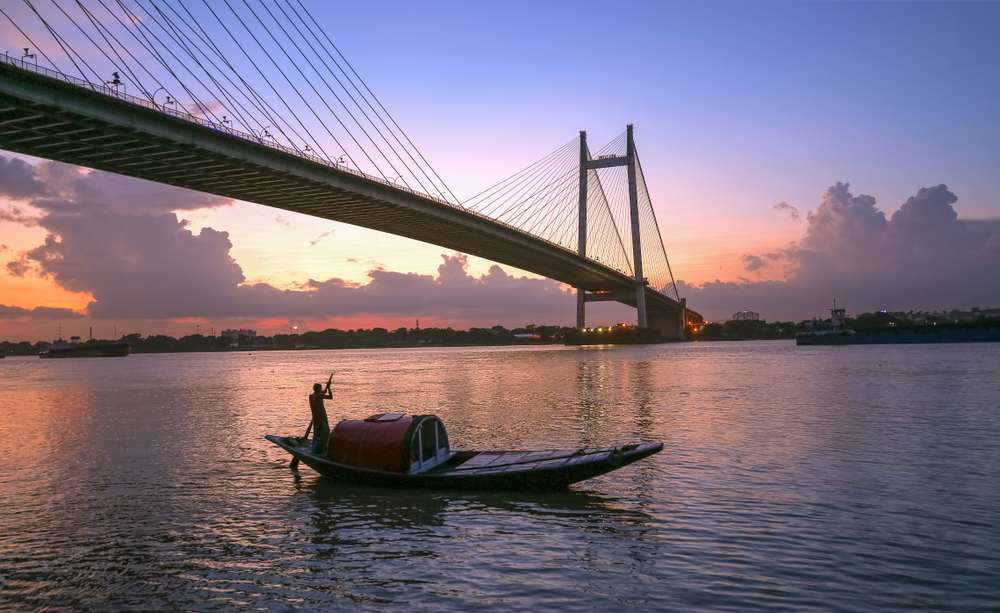India, a land steeped in spirituality and ancient traditions, is blessed with numerous holy rivers that hold immense significance in the country’s cultural and religious fabric. For centuries, these sacred waters have been revered and worshipped, believed to cleanse one’s sins and bestow spiritual purification. In this article, we embark on a spiritual journey along some of India’s holiest rivers, exploring their cultural importance, rituals, and the profound impact they have on the lives of millions of devotees.
Also read: NEW ZEALAND VISA FOR SLOVAK CITIZENS
The Ganges: The Divine Mother of India
The Ganges, also known as Ganga, is the most sacred river in India and holds an extraordinary place in the hearts of Hindus. Originating from the Gangotri Glacier in Uttarakhand, the river flows through the northern plains and merges with the Bay of Bengal in West Bengal. Varanasi, one of the oldest inhabited cities in the world, is situated on the banks of the Ganges and is considered the holiest place to perform the last rites for the departed souls. The Ganga Aarti, a daily ritual of offering lamps to the river, is a soul-stirring experience that attracts pilgrims and travelers from around the world.
The Yamuna: The Beloved Sister of the Ganges
The Yamuna, a major tributary of the Ganges, flows through the northern states of Uttarakhand, Himachal Pradesh, Uttar Pradesh, and Delhi. It holds immense importance in Hindu mythology and is closely associated with Lord Krishna’s childhood and his divine pastimes in Vrindavan and Mathura. The Yamuna is considered to be a symbol of love and devotion, and its banks host various religious festivals and rituals throughout the year.
The Brahmaputra: The Mighty River of Northeast India
The Brahmaputra, one of the longest rivers in the world, flows through the northeastern states of India, including Arunachal Pradesh and Assam. Known as the “Son of Brahma” in Hindu mythology, the Brahmaputra sustains the livelihoods of millions of people in the region and is an integral part of their cultural identity. Majuli, the world’s largest river island, is situated in the Brahmaputra and is known for its unique Vaishnavite monasteries and cultural traditions.
The Narmada: The Holy River of Central India
The Narmada River, considered one of the seven sacred rivers in Hinduism, flows through the states of Madhya Pradesh, Maharashtra, and Gujarat. The river is believed to be a manifestation of the Goddess Narmada and holds great spiritual significance for devotees. The Narmada Parikrama, a ritual of circumambulating the river, is considered highly auspicious and draws pilgrims seeking spiritual blessings.
The Godavari: The Ganga of the South
The Godavari, often referred to as the “Ganga of the South,” is the second-longest river in India and flows through the states of Maharashtra, Telangana, and Andhra Pradesh. The river is revered in Hindu mythology and is associated with various legends and tales. Nashik, situated on the banks of the Godavari, is host to the Kumbh Mela, a grand religious gathering that attracts millions of devotees every twelve years.
Read: NEW ZEALAND VISA FOR SLOVENIAN CITIZENS
The Kaveri: The Lifeline of South India
The Kaveri River, also known as Cauvery, flows through the southern states of Karnataka and Tamil Nadu. It is considered the lifeline of South India, sustaining agriculture and providing water for millions of people. Kaveri’s cultural significance is evident in the numerous temples and festivals celebrated along its banks.
Conclusion
India’s holy rivers hold a sacred place in the hearts of millions, and embarking on a spiritual journey along these divine waters is a profound experience. From the cleansing rituals on the banks of the Ganges in Varanasi to the grandeur of the Kumbh Mela on the Godavari, these rivers are a source of spiritual rejuvenation and cultural enrichment. As you traverse the sacred waters of India, you’ll witness the devotion, faith, and cultural diversity that bind the nation together. These rivers not only sustain life but also nourish the soul, leaving travelers and pilgrims with a deep sense of connection to India’s ancient heritage and spiritual legacy. So, let the sacred waters guide you on a transformative journey, and may the blessings of these holy rivers enrich your life with purity, peace, and spiritual bliss.
More articles: Navigating the American Dream: Career Opportunities That Define the USA






